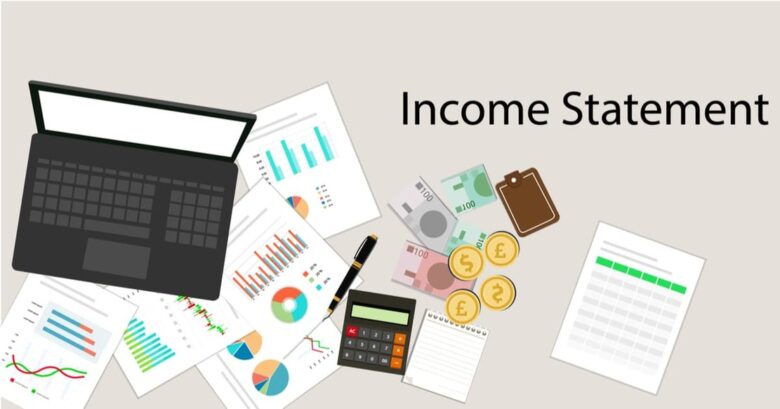Learning how to read and understand a profit and loss statement can change the way you run and grow your business. It’s more than just a financial report; it’s a map that shows how your business can generate profits, reduce costs, and continue to grow. Whether you’re a small business owner, investor, or entrepreneur, learning how to read this financial document can help you make better decisions. It tells you where your money comes from, where it goes, and how much money you’ll have left over. Profit and loss statements can be intimidating, but they are useful if you know how to use them. It’s not just about the numbers; it’s about understanding what they mean for your business’s future growth. To boost your financial confidence and make informed decisions, master the art of reading a profit and loss statement.
Learn the Basics of a Profit and Loss Statement:
The profit and loss statement, also known as the income statement, is one of the most important financial reports a company has. It shows a company’s revenue, expenses, and profits over a specific period of time, usually a month, quarter, or year. Its purpose is simple: to understand the company’s profitability. It starts with gross revenue at the top, subtracts all expenses, and ends with net profit at the bottom. This report’s numbers can provide insight into your company’s operations.
For example, higher revenue can mean that the company is growing, while higher expenses can mean that the company is not operating efficiently. The profit and loss statement can help you understand whether your company’s expenses are too high, whether your product prices are reasonable, or whether your costs are under control. Anyone who makes business decisions needs to know how to use the profit and loss statement, not just accountants. If you use the profit and loss statement regularly, it can help you prepare for the future and give you clear information about the financial health of your company.
Revenue Breakdown:
At the top of the income statement is revenue, the starting point of any financial journey. It shows how much money has been made from the sale of goods or services during a specific period. However, not all revenue is the same. You should focus on both gross and net revenue. Gross revenue refers to the total sales before expenses, while net revenue takes into account refunds, discounts, and allowances. By looking at how revenue changes over time, you can determine whether the business is growing, stable, or declining.
If your business has multiple sources of revenue, it’s also important to look at each one separately. This can assist in identifying the most profitable products or services, as well as those that require improvement or discontinuation. A rapid decline in revenue could mean that the market is changing, customers are unhappy, or prices are too high. A close analysis of your revenue can help you understand the health of your business and where to focus your energy.
Evaluating Cost of Goods Sold (COGS):
The cost of sales (COGS) is listed below the revenue on financial statements. It shows the direct costs of producing a product or service. This number includes the costs of supplies, labor, and production, but excludes the expenses associated with running a business, such as rent or wages. Gross profit is calculated by subtracting COGS from revenue. Focusing on COGS is important because it has a direct impact on your profits. Even if you have a favorable turnover, a high COGS can reduce your profit margins.
By monitoring changes in COGS, you can identify issues with suppliers, production, or increasing material costs. Sometimes, even minor adjustments in your purchasing or business processes can significantly impact your gross profit. You can also gain insight into your company’s performance by comparing your COGS to the industry average. Understanding and managing your COGS can help you establish better pricing strategies and increase your overall profit. Optimizing your COGS provides your company with greater growth potential and resilience during challenging times.
Understanding Operating Expenses:
A business incurs operating expenses, which are expenses not directly related to the production of goods or services. These include rent, utilities, marketing, employee salaries, and the cost of running a business. The income statement includes these expenses in the gross profit, which you must subtract to determine operating income. It is important to keep a close eye on operating expenses because they can quickly spiral out of control if not managed properly. If the growth of these expenses surpasses the growth of revenue, you will experience a loss.
One way to look at operating expenses is to determine what percentage of total revenue each expense category represents. This helps you understand where your money is going and which departments need to reduce costs or become more efficient. Additionally, it is crucial to monitor trends in operating expenses and remain vigilant for any unexpected increases. Efficient businesses often keep operating expenses low without sacrificing quality or customer satisfaction. Understanding how to manage operating expenses can help you increase profits and maintain long-term growth.
What Net Profit Means:
Net profit, sometimes called the “bottom line,” is the amount of money left over after all expenses, taxes, and interest have been paid. It’s the best measure of a company’s profitability and financial success. A positive net income means the company is making a profit. A negative net income means the company is making a loss. But net profit is more than just a number; it’s a reflection of how well a company is doing.
It tells you whether sales are high enough and costs are under control. By looking at how net profit changes over time, you can determine whether your company is healthy or in trouble. If your sales are growing but your net profit is declining, you may need to rethink your pricing model, cost structure, or investment strategy. Net profit is a key measure of how well a company is performing, so it’s important to pay close attention to it and understand what it means.
Conclusion:
You don’t need an accounting degree to read an income statement like an expert. All you need is practice, dedication, and a willingness to learn the fundamentals. You’ll be amazed at how much this financial document can reveal about a business. The income statement can help you make smarter decisions by showing you where your money comes from and what’s eating into your profits.
You can learn a lot by mastering every component, from revenue to net income. This can help you reduce waste, increase efficiency, and foster long-term growth. Gradually, the ability to read and comprehend a profit and loss statement will become instinctive, enabling you to confidently manage your finances and prevent financial issues. In this world of budgeting, knowing how to read a profit and loss statement is not only useful but essential. So, take control of your finances, and let the profit and loss statement guide you to better, stronger results.
FAQs:
1. What is a profit and loss statement? Why is it so important for entrepreneurs?
It helps entrepreneurs focus on costs, profits, and future investments and make smart choices about pricing and spending.
2. How often should I check my income statement?
Check it at least once a month or every three months to keep track of your financial situation and spot problems early.
3. What does negative net income mean?
It means that your costs are higher than your income, which indicates a loss. This could mean that you need to reduce your costs or increase your income.
4. What is the difference between net income and gross profit?
Gross profit is the profit after deducting the cost of goods sold, while net income is the amount left after all bills, taxes, and interest have been paid.
5. Can an income statement help you plan your budget?
Of course. It shows you where your money is going and helps you plan for future expenses, so you can budget based on real data.




